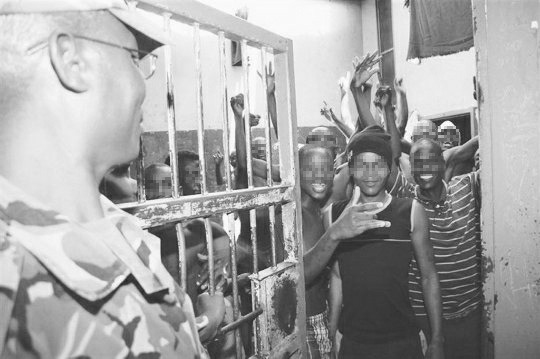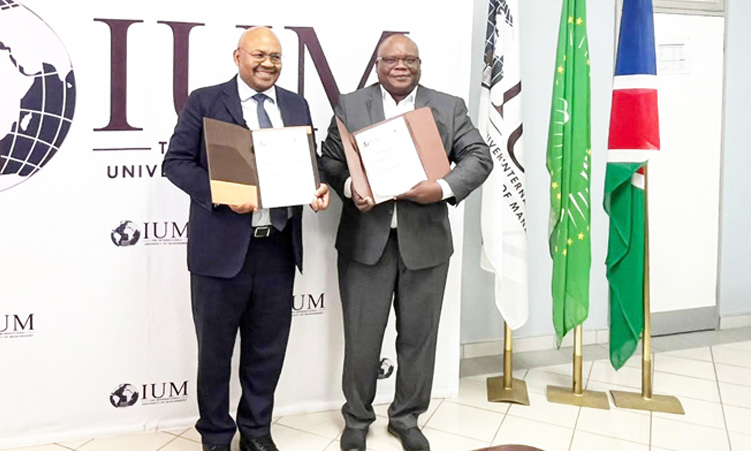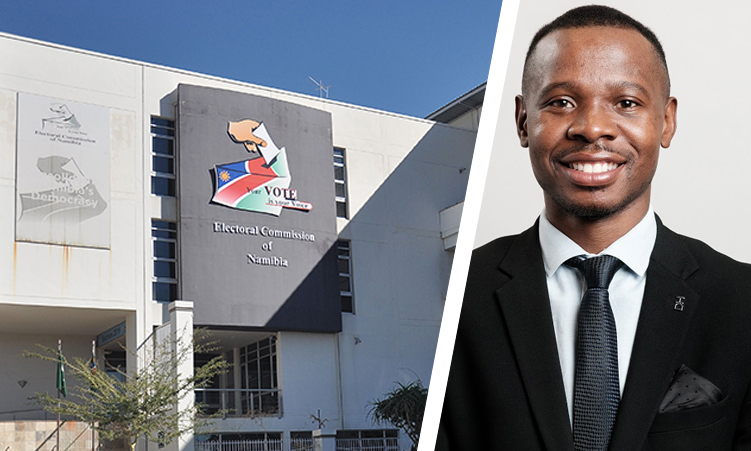NAMIBIA’S nascent diamond-polishing industry is still getting a rough deal and does not receive only Namibian diamonds from the Namibian Diamond Trading Company (NDTC), confidential documents obtained by The Namibian showed.
A draft copy obtained of the marketing agreement between the Government, De Beers Société Anonyme of Luxemburg, Namdeb and the NDTC showed that local cutters were instead receiving an “aggregate” mix – a selection of diamonds from all De Beers mines – for cutting locally. Local diamond-cutting firms that have set up business since last year, when the agreement was made public, did so in the hope of obtaining more of Namdeb’s rough, generally considered the most sought-after diamonds in the world.World output figures based upon those of De Beers, BHP Billiton and the World Diamond Council show that Botswana, the world’s biggest producer, sold 31,9 million carats in 2005 for about US$3,08 billion (About N$23,1 billion).This amounted to an average of US$96 per carat.For the same period, Namibian output of about 1,8 million carats sold for US$1,07 billion (about N$8,025 billion), which amounted to a whopping US$594 per carat, mostly due to the large percentage of gem-quality diamonds.According to the NDTC agreement, Namdeb sells all of its production to the NDTC at 90 per cent of the so-called “Standard Selling Value” (SSV), which sales are channelled via De Beers’ Prime Trading and DCS Corporation of Switzerland.NDTC then pays a 5 per cent royalty to the Diamond Trading Corporation (DTC) in London, before selling the Namdeb rough to DTC for 95 per cent of SSV.No value-added tax (VAT) is charged on any of these transactions, according to the draft agreement, which is believed to substantially the same as the formal NDTC agreement.The DTC then “aggregates” diamonds from all their mines in Africa and Canada, and sells the NDTC’s allotment back to it at 100 per cent of SSV.The NDTC then adds its own mark-up in the form of Value Added Services – believed to be largely the NDTC’s administrative overheads such as their generous salaries – before selling the diamonds to the 11 local sightholders.Further, the agreement specifically excludes any diamonds larger than 10,8 carats (“specials”) or stones of colour (“fancies”), which are highly sought after by collectors.The size of Namibia’s allotment of rough diamonds further is also determined by value, rather than carats – with the DTC International Price Book and a sample De Beers compiled being used to determine exactly what kind of stones are offered to local cutters.In terms of the agreement, De Beers is to supply US$230 million of rough diamonds to the local market between the inception of the agreement (February 2007) and December 31 2009.Mines and Energy Minister Errki Nghimtina last year announced that the local allocation would be 16 per cent of Namdeb “cuttables”, stones of gem quality that Namdeb said makes up 48 per cent of total production.Marine diamond production, which since 2005 has accounted for more than half of Namdeb’s output, is believed to of 95 per cent gem quality.Kombadayedu Kapwanga of Lev Leviev Diamonds said their own marine production was of up 99 per cent gem quality.A former DTC CEO of 16 years and now independent consultant, Charles Wyndham, also questioned the evaluation of “specials” and “fancies” according to the DTC International Price Book.”The key point to remember is that the DTC’s power lies in its discretionary power of distribution [of] specials and fancies as these do not fit into any price book, therefore there is even more latitude,” Wyndham said from London.”The fact that there is a price book should not lead you to believe that there is some fool-proof and empirical pricing system, there is not.While pricing of rough was difficult, he did not think the DTC was very good at it and relied on manipulating of prices instead, he said.”In my opinion the Namibian production is really a sweetener in the DTC mix.If Namibian production was offered in tender on the open market, it would probably get something in the order of 30 to 50% higher prices,” he said.Local, private sub-contractors to Namdeb have also complained that they were receiving a rough deal for the diamonds they produce, with prices ranging between N$650 and N$900 a carat.These producers, who have organised themselves into an association, recently brought their complaints to the attention of some Members of Parliament, who promised that they “…would leave no stone unturned” in addressing the matter, a spokesman for the group said.Questions were also raised on how the agreement was clinched.A team of technical experts, consisting of Diamond Commissioner Kennedy Hamutenya and a number of Permanent Secretaries, for two years put together a report on all agreements with De Beers.But they were then replaced by another team – few of whom who could be considered experts in the diamond trade – to negotiate the final NDTC agreement with De Beers, The Namibian was reliably informed.NDTC chairman Shihaleni Ndjaba could not be immediately reached for comment, but another member of this teal defended the NDTC deal as “the best we could get for Namibia.”The exclusion of specials and fancies from local selling mixes was because local cutters had declined “…to take on the risk of cutting such expensive stones,” this person said.But local cutters scoffed at this, pointing out that out of 11 local NDTC sightholders, eight were also DTC UK sightholders.LLD’s Kapwanga pointed out that they have been cutting large stones locally since 2004.”Why can’t they cut those specials here?” he asked.The real question, Wyndham suggested, was why any specials or fancies of over $450 were not first offered for sale in Namibia, as was the case in South Africa.”More than one cutter in Namibia has a factory in SA,” he remarked.* John Grobler is a freelance journalist’ 081 240 1587Local diamond-cutting firms that have set up business since last year, when the agreement was made public, did so in the hope of obtaining more of Namdeb’s rough, generally considered the most sought-after diamonds in the world.World output figures based upon those of De Beers, BHP Billiton and the World Diamond Council show that Botswana, the world’s biggest producer, sold 31,9 million carats in 2005 for about US$3,08 billion (About N$23,1 billion).This amounted to an average of US$96 per carat.For the same period, Namibian output of about 1,8 million carats sold for US$1,07 billion (about N$8,025 billion), which amounted to a whopping US$594 per carat, mostly due to the large percentage of gem-quality diamonds.According to the NDTC agreement, Namdeb sells all of its production to the NDTC at 90 per cent of the so-called “Standard Selling Value” (SSV), which sales are channelled via De Beers’ Prime Trading and DCS Corporation of Switzerland.NDTC then pays a 5 per cent royalty to the Diamond Trading Corporation (DTC) in London, before selling the Namdeb rough to DTC for 95 per cent of SSV.No value-added tax (VAT) is charged on any of these transactions, according to the draft agreement, which is believed to substantially the same as the formal NDTC agreement.The DTC then “aggregates” diamonds from all their mines in Africa and Canada, and sells the NDTC’s allotment back to it at 100 per cent of SSV.The NDTC then adds its own mark-up in the form of Value Added Services – believed to be largely the NDTC’s administrative overheads such as their generous salaries – before selling the diamonds to the 11 local sightholders.Further, the agreement specifically excludes any diamonds larger than 10,8 carats (“specials”) or stones of colour (“fancies”), which are highly sought after by collectors.The size of Namibia’s allotment of rough diamonds further is also determined by value, rather than carats – with the DTC International Price Book and a sample De Beers compiled being used to determine exactly what kind of stones are offered to local cutters.In terms of the agreement, De Beers is to supply US$230 million of rough diamonds to the local market between the inception of the agreement (February 2007) and December 31 2009. Mines and Energy Minister Errki Nghimtina last year announced that the local allocation would be 16 per cent of Namdeb “cuttables”, stones of gem quality that Namdeb said makes up 48 per cent of total production.Marine diamond production, which since 2005 has accounted for more than half of Namdeb’s output, is believed to of 95 per cent gem quality.Kombadayedu Kapwanga of Lev Leviev Diamonds said their own marine production was of up 99 per cent gem quality.A former DTC CEO of 16 years and now independent consultant, Charles Wyndham, also questioned the evaluation of “specials” and “fancies” according to the DTC International Price Book.”The key point to remember is that the DTC’s power lies in its discretionary power of distribution [of] specials and fancies as these do not fit into any price book, therefore there is even more latitude,” Wyndham said from London.”The fact that there is a price book should not lead you to believe that there is some fool-proof and empirical pricing system, there is not.While pricing of rough was difficult, he did not think the DTC was very good at it and relied on manipulating of prices instead, he said.”In my opinion the Namibian production is really a sweetener in the DTC mix.If Namibian production was offered in tender on the open market, it would probably get something in the order of 30 to 50% higher prices,” he said.Local, private sub-contractors to Namdeb have also complained that they were receiving a rough deal for the diamonds they produce, with prices ranging between N$650 and N$900 a carat. These producers, who have organised themselves into an association, recently brought their complaints to the attention of some Members of Parliament, who promised that they “…would leave no stone unturned” in addressing the matter, a spokesman for the group said.Questions were also raised on how the agreement was clinched.A team of technical experts, consisting of Diamond Commissioner Kennedy Hamutenya and a number of Permanent Secretaries, for two years put together a report on all agreements with De Beers.But they were then replaced by another team – few of whom who could be considered experts in the diamond trade – to negotiate the final NDTC agreement with De Beers, The Namibian was reliably informed. NDTC chairman Shihaleni Ndjaba could not be immediately reached for comment, but another member of this teal defended the NDTC deal as “the best we could get for Namibia.”The exclusion of specials and fancies from local selling mixes was because local cutters had declined “…to take on the risk of cutting such expensive stones,” this person said.But local cutters scoffed at this, pointing out that out of 11 local NDTC sightholders, eight were also DTC UK sightholders.LLD’s Kapwanga pointed out that they have been cutting large stones locally since 2004.”Why can’t they cut those specials here?” he asked.The real question, Wyndham suggested, was why any specials or fancies of over $450 were not first offered for sale in Namibia, as was the case in South Africa.”More than one cutter in Namibia has a factory in SA,” he remarked.* John Grobler is a freelance journalist’ 081 240 1587
Stay informed with The Namibian – your source for credible journalism. Get in-depth reporting and opinions for
only N$85 a month. Invest in journalism, invest in democracy –
Subscribe Now!






